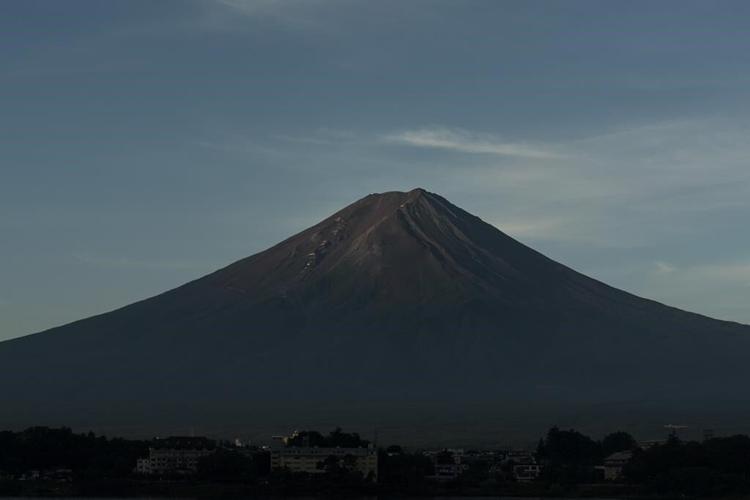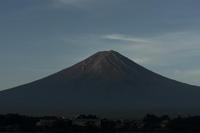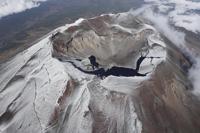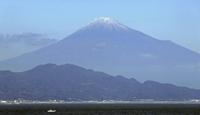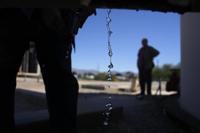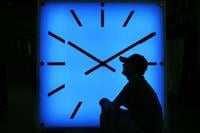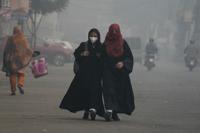TOKYO (AP) — Japan's Mount Fuji finally got its trademark snowcap early on Wednesday, more than a month after it normally would and after setting a record for the most-delayed snowfall in 130 years.
The first snowfall on Mt. Fuji, a , could be seen from the southwestern side of the mountain, according to the Shizuoka branch of the Japan Meteorological Agency.
But the JMA's Kofu Local Meteorological Office, which is on the other side of the mountain and has been in charge of making the announcement since 1984, still could not see the snow due to cloudy weather — meaning it's not official yet.
The lack of snow on Mt. Fuji on Tuesday broke the previous record set on Oct. 26, 2016, meteorological officials said.
Usually, the 3,776-meter- (nearly 12,300-foot-) high mountain has sprinkles of snow falling on its summit starting Oct. 2, about there ends. Last year, snow fell on the mountain on Oct. 5, according to the JMA.
The snowless Mt. Fuji has captured attention on social media. People posted photos showing the bare mountain, some expressing surprise and others .
The JMA's Kofu office has cited October's surprisingly summery weather as the reason. The temperature earlier this year has been higher across Japan, including Mt. Fuji.
“Many people are waiting to see the snowcap and we've received many inquiries recently,” Kiryu said. He said clouds around the mountaintop have blocked the view since Wednesday morning, delaying the confirmation of the snowcap, but officials are continuing to try to get a peak at the first snowfall.
Kiryu said it is too early to link this year's late snowcap to global warming, noting Mt. Fuji's first snow last year was in early October, adding: “I think we need to examine data for a longer period of time to make any conclusion."
The average October temperature is minus 2 degrees Celsius (28.4 degrees Fahrenheit) at the summit, but this year, it was 1.6 C, (34.9 F), a record high since 1932.
Japan this year also had an unusually hot summer and warm autumn.
A symbol of Japan, the mountain called “Fujisan” used to be a place of pilgrimage. The mountain with its snowy top and near symmetrical slopes have been the subject of numerous forms of art, including Japanese ukiyoe artist Katsushika Hokusai's Thirty-six Views of Mount Fuji.
Today, it attracts hikers who climb to the summit to see the sunrise. But tons of trash left behind and overcrowding have triggered concern and calls for environmental protection and .
Jun Kubota, a weather forecaster and a climber who grew up in Yamanashi, one of the two prefectures that are home to Mt. Fuji, says he is concerned if this year's delayed snowfall is part of a trend.
“I wonder if the season we can enjoy the snow is getting shorter, not just at Mt. Fuji but also on other mountains in central Japan or on Hokkaido," Kubota said in a Zoom call. i
He noted reports of snow shortage on ski slopes in recent years. “I'm afraid there could be an impact not only on snow mountain climbing, but also winter sports in general.”
___
AP video journalist Mayuko Ono contributed to this report.

